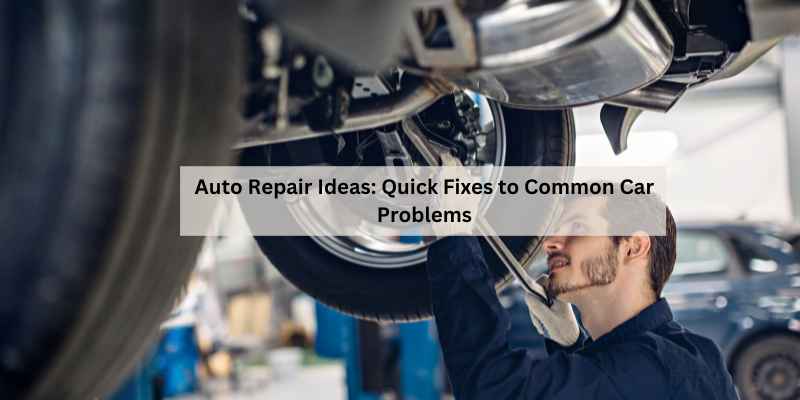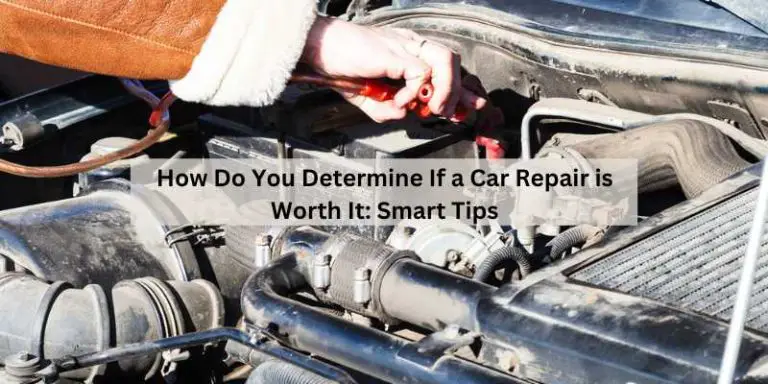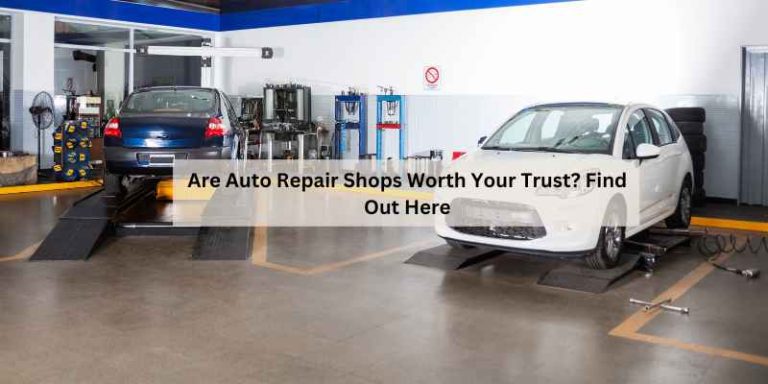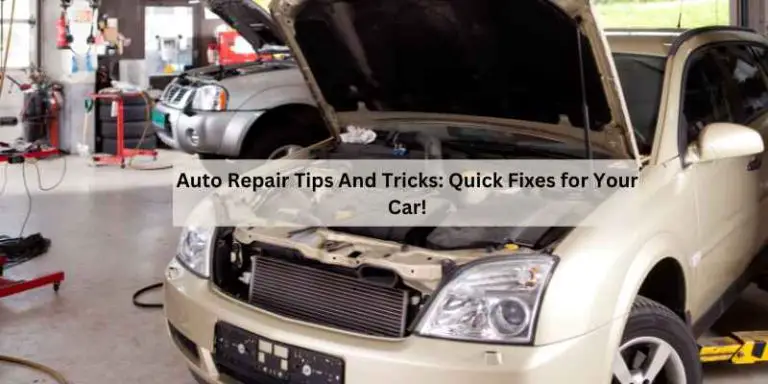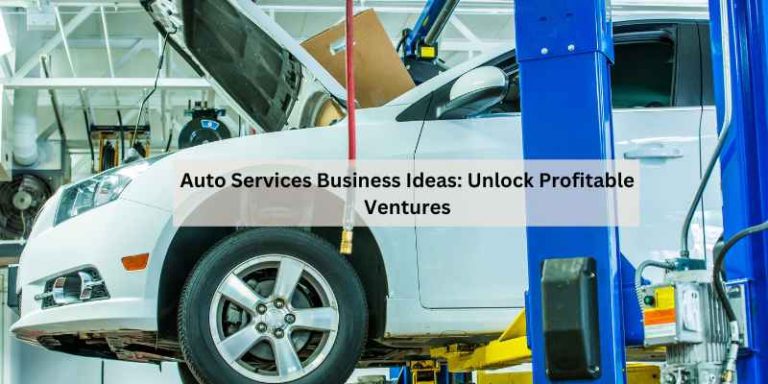Auto Repair Ideas: Quick Fixes to Common Car Problems
Auto repair hacks that will save you time and money! Some of the easiest DIY repairs include changing oil, a flat tire, spark plugs, scratches from paint, car battery, headlights or taillights, wiper blades and air filters.
However, the most difficult automotive repair is engine replacement, which is incredibly expensive. It is often more appropriate to purchase a new vehicle rather than pay for an engine replacement. When it comes to setting up an auto repair shop, you should focus on having enough space for your business’ services, invest in quality storage, organize efficiently and upgrade your tech.
It is important to choose a trustworthy mechanic to avoid scams and costly repairs.
Identifying Common Car Issues
When it comes to maintaining your vehicle, being able to identify common car issues is essential. By recognizing early warning signs, you can prevent costly repairs and ensure your car runs smoothly. Let’s explore some quick diagnosis tips and the top symptoms to watch for.
Quick Diagnosis Tips
- Check engine light: Use an OBD2 scanner to read trouble codes.
- Strange noises: Listen for grinding, squealing, or knocking sounds.
- Fluid leaks: Identify the type and color of the leaking fluid.
Top Symptoms To Watch For
- Engine overheating: Look out for high temperature gauge readings.
- Brake issues: Squeaking brakes or spongy brake pedal.
- Electrical problems: Flickering lights or malfunctioning electronics.
DIY Fixes For Your Vehicle
Keeping your vehicle in top condition doesn’t always have to mean a trip to the mechanic. With a few simple tools and a bit of know-how, you can tackle some common car issues on your own. Here are some DIY fixes that can save you time and money.
Changing Your Oil
Regular oil changes are crucial for the health of your engine. Follow these steps to change your oil:
- Locate the oil drain plug underneath your car.
- Position an oil pan beneath the plug and remove it to drain the old oil.
- Replace the oil filter and pour in the new oil.
- Dispose of the old oil properly at a recycling center.
Replacing Wiper Blades
Clear visibility is essential for safe driving, so make sure your wiper blades are in good condition. Here’s how to replace them:
- Lift the wiper arm away from the windshield.
- Press the tab to release the old blade and slide it off.
- Attach the new blade by sliding it into place until it clicks.
- Gently lower the wiper arm back onto the windshield.
By mastering these DIY fixes, you can keep your vehicle running smoothly without breaking the bank.
Dealing With Car Batteries
Car batteries are an essential component of your vehicle, and dealing with them effectively is crucial for ensuring your car’s optimal performance. Whether it’s jumpstarting a dead battery or changing it altogether, understanding the basics of car battery maintenance can save you time, money, and hassle.
Jumpstarting A Dead Battery
When your car refuses to start due to a dead battery, a quick jumpstart can get you back on the road. Follow these simple steps to jumpstart your car:
- Position the running vehicle close to the one with the dead battery.
- Turn off both cars and connect the jumper cables to the positive and negative terminals.
- Start the engine of the working car and let it run for a few minutes.
- Attempt to start the dead car. If it doesn’t start, wait a few more minutes and try again.
- Once the dead car starts, let it run for a while to charge the battery.
Changing A Car Battery
If your car battery is beyond resuscitation, you may need to replace it. Here’s a simple guide to changing a car battery:
- Locate the battery and identify the positive and negative terminals.
- Disconnect the negative terminal first, followed by the positive terminal.
- Remove the battery from its housing and clean the terminal clamps and cable connectors.
- Place the new battery in the housing and connect the positive terminal first, followed by the negative terminal.
- Ensure the connections are secure and apply a thin layer of grease to prevent corrosion.
Tire Maintenance And Repair
Proper tire maintenance and repair are crucial for safe driving and extending the lifespan of your vehicle. Regularly checking tire pressure, alignment, and tread wear can prevent accidents and save you money in the long run.
Changing A Flat Tire
Changing a flat tire is an essential skill for every driver. Follow these simple steps to get back on the road:
- Find a safe, flat area to park
- Apply the parking brake and turn on hazard lights
- Place a wheel chock under the tire opposite the flat one
- Loosen the lug nuts and lift the vehicle with a jack
- Remove the lug nuts and flat tire
- Mount the spare tire and tighten the lug nuts
- Lower the vehicle, tighten the lug nuts, and stow the equipment
Checking Tire Pressure
Regularly checking tire pressure is crucial for safe driving and extending tire life. Follow these steps to check and maintain the right tire pressure:
- Use a reliable tire pressure gauge to measure the pressure
- Refer to the vehicle owner’s manual or the placard on the driver’s door jamb for the recommended pressure
- If the pressure is low, add air until the recommended pressure is reached
- Check the pressure in all tires, including the spare, at least once a month
- Inspect tires for signs of uneven wear, damage, or foreign objects
Scratches And Paint Issues
When it comes to maintaining the appearance of your vehicle, dealing with scratches and paint issues is crucial. Here are some effective techniques to address these common problems.
Removing Scratches From Paint
Scratches on your car’s paint can be unsightly, but there are ways to effectively remove them without spending a fortune. Here are some techniques for tackling those pesky scratches:
- Wash and Dry: Begin by thoroughly washing the affected area to remove any dirt or debris that could exacerbate the scratches.
- Polishing Compound: Apply a high-quality polishing compound to the scratched area and gently rub it in with a soft cloth, using circular motions.
- Scratch Remover: Utilize a specialized scratch remover product, following the instructions carefully to ensure safe and effective application.
- Clear Coat Application: Finish off the process by applying a clear coat to protect the newly treated area and restore the shine.
Touch-up Painting Techniques
For minor paint issues such as chips or small scratches, touch-up painting can be a convenient and cost-effective solution. Here’s how to effectively perform touch-up painting:
- Surface Preparation: Clean the area thoroughly and ensure it is completely dry before starting the touch-up process.
- Color Matching: Obtain the correct touch-up paint that matches your vehicle’s color, either from the manufacturer or a reputable automotive supplier.
- Precise Application: Use a fine brush or applicator to carefully apply the touch-up paint to the affected area, ensuring even coverage and minimal excess.
- Seal and Protect: Once the paint has dried, apply a clear coat to seal the area and provide long-lasting protection.
Lighting And Electrical Repairs
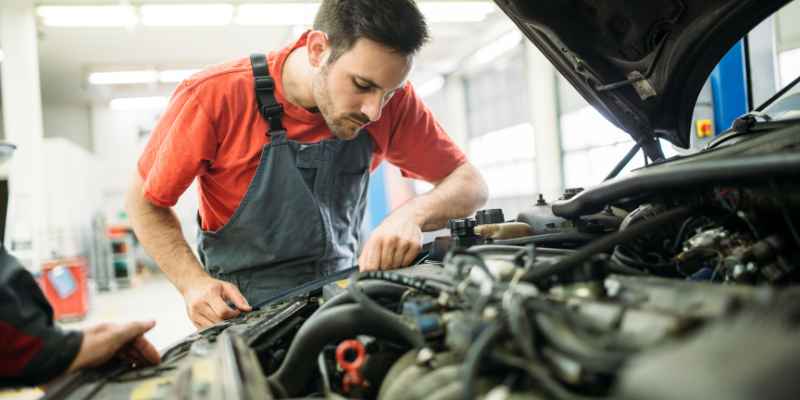
When it comes to auto repair, addressing lighting and electrical issues is crucial for ensuring safety and functionality on the road. Whether it’s replacing faulty lights or troubleshooting electrical faults, proper maintenance in these areas is essential for every vehicle.
Replacing Head Or Tail Lights
One common issue with vehicle lighting is the need to replace head or tail lights. This simple yet important task can greatly improve visibility and ensure that the vehicle complies with road safety regulations. If you notice a dim or non-functional head or tail light, it’s crucial to address the issue promptly to maintain safe driving conditions.
Troubleshooting Electrical Faults
Another critical aspect of lighting and electrical repairs is troubleshooting electrical faults. Identifying and addressing electrical issues such as faulty wiring, malfunctioning switches, or blown fuses is essential for maintaining the overall functionality of the vehicle’s electrical system. By conducting thorough diagnostics, potential safety hazards can be mitigated, and the vehicle’s electrical components can be restored to optimal working condition.
Engine And Transmission Basics
When it comes to maintaining your vehicle, understanding the basics of the engine and transmission is crucial. Proper care and regular inspections can help prevent costly repairs down the line.
Checking Spark Plugs
One important aspect of engine maintenance is checking the condition of your spark plugs. These small components play a big role in the ignition process and can impact your vehicle’s performance.
- Inspect spark plugs regularly for signs of wear and damage.
- Replace spark plugs as recommended by your vehicle manufacturer.
- Ensure proper gapping and installation for optimal engine function.
Understanding Transmission Fluid
Transmission fluid is essential for keeping your transmission running smoothly. Proper maintenance of the transmission fluid can help prevent costly transmission repairs.
- Regularly check transmission fluid levels and condition.
- Follow manufacturer recommendations for changing transmission fluid.
- Ensure the right type of transmission fluid is used for your vehicle.
Advanced Repairs And When To Seek Help
When it comes to auto repairs, some issues may require advanced expertise. It’s crucial to know when to seek professional help to ensure your vehicle stays in top condition. Here are some key areas to focus on:
Identifying When To Replace Engine Components
Recognizing the signs that indicate the need to replace engine components can prevent major breakdowns. Look out for excessive smoke, unusual noises, or a decrease in performance as indicators that certain parts may need replacement.
Recognizing The Signs Of Transmission Failure
Transmission issues can be complex and costly if not addressed promptly. Watch for slipping gears, leaking fluids, or grinding noises when shifting gears as potential signs of transmission problems that require immediate attention.
Organizing Your Auto Repair Space
Efficiently organizing your auto repair space can save you both time and money. Invest in quality storage, measure and map your space, and upgrade your technology to create a functional and organized workspace.
Designing An Efficient Workspace
Organizing your auto repair space is crucial for efficiency and productivity. Designing an efficient workspace involves creating designated areas for different tasks.
Selecting The Right Tools And Equipment
Equipping your auto repair space with the right tools and equipment is essential for smooth operations. Ensure you have high-quality tools that are appropriate for the tasks at hand.
Smart Shopping For Auto Repair
When it comes to auto repair, smart shopping can save you time, money, and headaches. From finding quality spare parts to choosing a reliable mechanic, making informed decisions is key to ensuring your vehicle receives the best care. Let’s explore some essential tips for smart shopping in the world of auto repair.
Finding Quality Spare Parts
When sourcing spare parts for your vehicle, it’s crucial to prioritize quality to ensure the longevity and performance of your repairs. Here are some tips to consider:
- Research: Look for reputable suppliers known for their genuine and high-quality parts.
- Read Reviews: Check customer reviews and feedback to gauge the reliability of the parts.
- OEM vs. Aftermarket: Evaluate whether Original Equipment Manufacturer (OEM) parts or aftermarket parts best suit your needs and budget.
- Warranty: Opt for parts that come with a warranty to provide you with added peace of mind.
How To Choose A Reliable Mechanic
Entrusting your vehicle to a reliable mechanic is essential for receiving top-notch auto repair services. Consider the following factors when selecting a mechanic:
- Certifications: Look for mechanics with certifications from reputable organizations or manufacturers.
- Experience: Prioritize mechanics with extensive experience working on vehicles similar to yours.
- Referrals: Seek recommendations from family, friends, or online communities to find trusted mechanics.
- Transparency: Choose a mechanic who communicates openly and transparently about the repair process and costs.
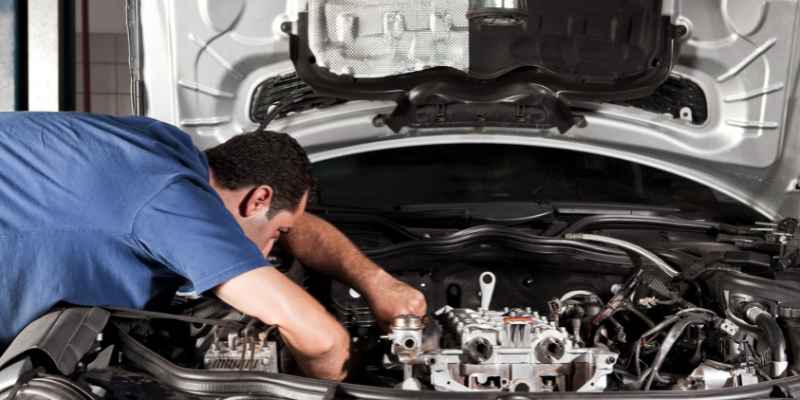
Frequently Asked Questions
What Is The Hardest Thing To Repair In A Car?
The hardest thing to repair in a car is the engine. It is a complex and costly repair, often making it more practical to buy a new vehicle.
What Is The Easiest Thing To Fix On A Car?
The easiest thing to fix on a car is changing oil, changing a flat tire, or replacing spark plugs.
What Is Most Expensive To Fix In A Car?
The most expensive car repair is engine replacement, which is considered the most difficult and costly automotive repair.
How To Layout An Auto Repair Shop?
To layout an auto repair shop, consider space requirements, measure and map, invest in quality storage, organize efficiently, and upgrade your tech. Focus on having enough space for your business’ services and ensure efficient organization for a successful layout.
Conclusion
Auto repair can be daunting, but with the right knowledge and tools, it becomes manageable. Regular maintenance and DIY fixes can save time and money. Choosing a reliable mechanic is crucial for quality repairs. By following these tips, you can ensure your vehicle stays in top condition.

